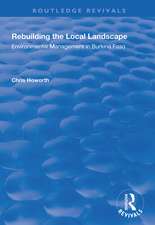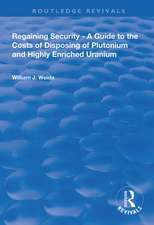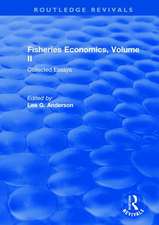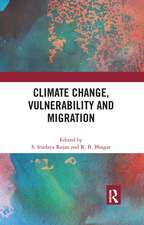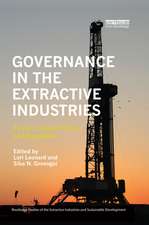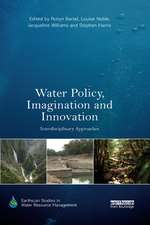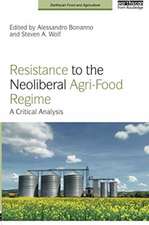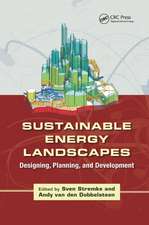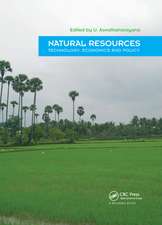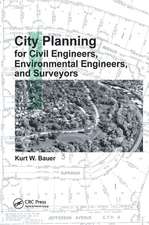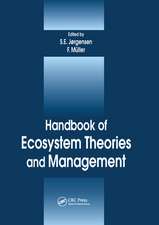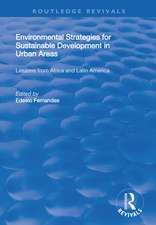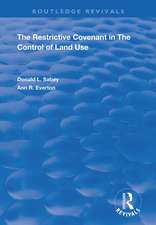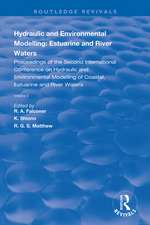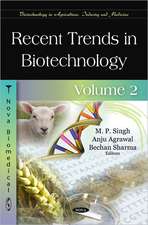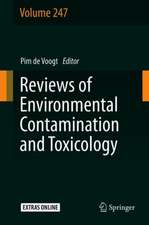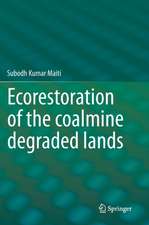Biomonitoring of Water and Waste Water
Autor Anju Agrawal, Krishna Gopalen Limba Engleză Hardback – 8 feb 2013
It is clear that the synthetic chemicals are essential for our society to maintain the health and well being of the people. However, there has been a range of detrimental effects on human health and natural environment. In general, we need to improve our management of waste chemicals discharged into the air, water and soil environments. New techniques are needed to predict adverse effects before they occur and for the treatment of wastes. In addition, a range of social, political and economic factors will be needed to be taken into account in order to achieve success.
| Toate formatele și edițiile | Preț | Express |
|---|---|---|
| Paperback (1) | 553.56 lei 38-44 zile | |
| Springer India – 23 aug 2016 | 553.56 lei 38-44 zile | |
| Hardback (1) | 649.06 lei 6-8 săpt. | |
| Springer India – 8 feb 2013 | 649.06 lei 6-8 săpt. |
Preț: 649.06 lei
Preț vechi: 763.60 lei
-15% Nou
Puncte Express: 974
Preț estimativ în valută:
124.21€ • 134.88$ • 104.34£
124.21€ • 134.88$ • 104.34£
Carte tipărită la comandă
Livrare economică 22 aprilie-06 mai
Preluare comenzi: 021 569.72.76
Specificații
ISBN-13: 9788132208631
ISBN-10: 8132208633
Pagini: 184
Ilustrații: XVII, 166 p.
Dimensiuni: 178 x 254 x 16 mm
Greutate: 0.66 kg
Ediția:2013
Editura: Springer India
Colecția Springer
Locul publicării:New Delhi, India
ISBN-10: 8132208633
Pagini: 184
Ilustrații: XVII, 166 p.
Dimensiuni: 178 x 254 x 16 mm
Greutate: 0.66 kg
Ediția:2013
Editura: Springer India
Colecția Springer
Locul publicării:New Delhi, India
Public țintă
ResearchCuprins
1.Measurement of Primary Productivity in Relation to Food Chain.- 2.Aquatic Weeds : Occurrence and Distribution.- 3.Analysis of Phytoplankton and Zooplankton.- 4.Application of Diversity Index in Measurement of Species Diversity.- 5.Challenges of Fish Diversity in Polluted Habitat.- 6.Biomass production in Food Chain and Its Role In Trophic Levels.- 7.Concept of Rare and Endangered Species and its Impact on Biodiversity.- 8.Protected Areas In Relation to Marine Parks and Sanctuaries.- 9.General Principles of Toxicity and Its Application.- 10. Principles of Biostatistics and Reporting of Data.- 11. Fate of Biotoxins in the environment and its Health Implication.- 12.Microbial Toxicity Studies.- 13.Toxic Cynobacteria in Water and their public health consequence.- 14.Good Laboratory Practices for Biomonitoring.
Notă biografică
Dr Anju Agrawal did her Doctor of Philosophy from Lucknow University, Lucknow, in the year 1986 but her work was carried in Central Drug Research Institute, Lucknow. Presently she is working as Associate Professor in S N Sen B V P G College, Kanpur which is associated to Chattrapati Sahuji Maharaj University, Kanpur. She has 13 books to her credit and 10 book chapters. Her current area of research is amoebias, malariology and toxicology.
Dr. Krishna Gopal, Senior Principal Scientist, Aquatic Toxicology Division, Indian Institute of Toxicology Research, Lucknow, is a distinguished Toxicologist. During his long research journey, he has developed expertise on standardization of modern techniques to assess the severity and mechanism of toxicity and physiological consequences viz. neurobehavioral, neurotransmitters and series of hormone induced tissues and hematological changes in freshwater fish exposed to xenobiotics. His current area of research is related to assess waterbornediseases at different developmental stages, environmental risk on direct exposure and indirectly through food chain, drinking water quality, biotoxins and emerging pollutants of global concern. He is credited with 2 patents and more than 120 research papers in the journals of repute. He has edited 5 books and more than 10 book chapters in his research domain.
Dr. Krishna Gopal, Senior Principal Scientist, Aquatic Toxicology Division, Indian Institute of Toxicology Research, Lucknow, is a distinguished Toxicologist. During his long research journey, he has developed expertise on standardization of modern techniques to assess the severity and mechanism of toxicity and physiological consequences viz. neurobehavioral, neurotransmitters and series of hormone induced tissues and hematological changes in freshwater fish exposed to xenobiotics. His current area of research is related to assess waterbornediseases at different developmental stages, environmental risk on direct exposure and indirectly through food chain, drinking water quality, biotoxins and emerging pollutants of global concern. He is credited with 2 patents and more than 120 research papers in the journals of repute. He has edited 5 books and more than 10 book chapters in his research domain.
Textul de pe ultima copertă
Biomonitoring of water quality is very much essential for assessing the overall health of water bodies and safe supply of drinking water. The chemical nature of toxicant is highly dynamic in environment with time and space whereas biological system can integrate all environmental variables over a large period of time in terms of effect that can be easily measured and quantified. In view of the above, there is a pressing need to determine the water quality of natural resources as well as drinking water based on the standard protocols and guidelines from regulatory agencies.
It is clear that the synthetic chemicals are essential for our society to maintain the health and well being of the people. However, there has been a range of detrimental effects on human health and natural environment. In general, we need to improve our management of waste chemicals discharged into the air, water and soil environments. New techniques are needed to predict adverse effects before they occur and for the treatment of wastes. In addition, a range of social, political and economic factors will be needed to be taken into account in order to achieve success.
It is clear that the synthetic chemicals are essential for our society to maintain the health and well being of the people. However, there has been a range of detrimental effects on human health and natural environment. In general, we need to improve our management of waste chemicals discharged into the air, water and soil environments. New techniques are needed to predict adverse effects before they occur and for the treatment of wastes. In addition, a range of social, political and economic factors will be needed to be taken into account in order to achieve success.
Caracteristici
Written by eminent and well-known researchers and environmentalists Features topical and emerging issues related to water and waste water The diverse topics covered will be suitable for both those already active in the area and for those who wish to expand their repertoire of experimental tools and are just starting out in environmental science research? Includes a special chapter on rare and endangered species and its impact on biodiversity

